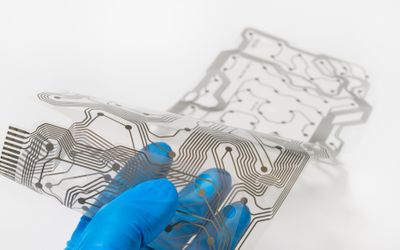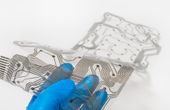OKdo x Radxa ROCK 5 Model B
A single-board computer by Radxa and OKdo features a built-in on/off button, quad display up to 8k resolution, no storage limitations, and multiple OS compatibility for advanced multimedia applications.
Technical Specifications
| SoC | Rockchip RK3588 |
| Processor | Arm DynamIQ (Quad Cortex – A76 @ 2.2/2.4GHz, Quad Cortex – A55 @ 1.8GHz) |
| GPU | Arm Mali G610MC4 GPU, supporting OpenGL® ES1.1, ES2.0, and ES3.2, OpenCL® 1.1, 1.2 and 2.2, Vulkan® 1.1 and 1.2, and embedded high-performance 2D image acceleration module |
| Memory | 8GB 64bit LPDDR4 RAM |
| Power Requirements | USB Type-C™ PD Version 2.0 with 9V/2A, 12V/2A, 15V/2A and 20V/2A. |
| 5V Power applied to the GPIO PIN 2 & 4. | |
| The recommended power source capacity is at least 24W without a M.2 SSD or 36W with a M.2 SSD. | |
| HDMI | Dual HDMI ports supporting displays up to 8Kp60 resolution and 4Kp60 |
| Micro-HDMI input port supporting up to 4Kp60 resolution | |
| USB | 2x USB2 HOST ports |
| 1x USB3 HOST port | |
| 1x USB3 OTG/HOST port | |
| MIPI | 1x 4 lane DSI, 1x 4 lane CSI |
| Storage | Micro SD / eMMC |
| UARTS | 2x UART |
| On/Off Power Button | Yes |
| Software | Full implementation of the Arm architecture v8 instructions set |
| Debian/Ubuntu Linux support | |
| Android 12 support | |
| RKNPU2 NPU software stack | |
| Hardware access/control library for Linux/Android | |
| Operation temperature | 0~50 ℃ |
| Storage temperature | -20~80 ℃ |
Overview
The ROCK 5 Model B is an SBC with a compact form factor equipped with various functionalities, features, and expansion options. It has a PI-co ITX form factor, denoting a 2.5-inch, 100 x 72mm dimension. It features the combined power of Quad Arm Cortex A76 CPU and Quad Arm DynamIQ Cortex A55 while utilizing the Arm Mali G610MC4 for its GPU.
ROCK 5B incorporates a stereo audio jack, 4/8/16/24GB LPDDR4x RAM, and dual HDMI ports that can support resolution displays up to 8Kp60. Aside from being compatible with a wide range of operating systems, the no storage limit eMMC socket allows for advanced multimedia applications, like games, videos, and signages.
Design
Processors & Memory
ROCK 5B utilizes the Rockchip RK3588 SoC technology. Its processors include the 2.2/2.4GHz Quad Cortex A76 and Arm DynamIQ-configured Quad Cortex A55 at 1.8GHz. The GPU is Arm Mali G610MC4, which can support OpenCL 1.1, 1.2, 2.2, OpenGL ES1.1, ES2.0, ES3.2, Vulkan 1.1, and 1.2, as well as an embedded high-performance 2D image acceleration module.
The NPU supports INT4/INT8/INT16/FP16/BF16 and TF32 acceleration, with computing power as high as 6TOPs. The RAM uses the 64bits LPDDR4x RAM available in 4GB, 8GB, 16GB, and 24GB options.
On / Off button
The built-in On/Off power button allows safe shutdowns—avoiding risks of corrupted storage and software, which comes when powering computers off.
Operating System
ROCK 5B is compatible with multiple operating systems, including Android 12, Debian/Ubuntu Linux, the full implementation of the Arm architecture v8 instructions set, OpenFyde OS, RKNPU2 NPU software stack, and hardware access/control library for Linux/Android.
Power Requirements
The ROCK 5B supports power supply technologies like smart power adapters and fixed voltage. It has a USB Type C PD Version, which comes in 9V/2A, 12V/2A, 15V/2A, and 20V/2A options. The device requires a power adapter with a fixed voltage within a 5-20V range. The GPIO PINs 2 and 4 receive the applied 5V power from the recommended source that can produce at least 30W with an M.2 SSD or 24W without an M.2 SSD.
SBC accessories Compatibility
With a 40-pin header, ROCK 5B can support a broad range of interface options. The board gains a wide range of connectivity capabilities, ensuring compatibility with many existing accessories. The dual functionality of various pins can even further ROCK 5B application in advanced accessories.
Network
ROCK 5B has a 10/100/1000/2500 Mbit RJ45 connector designed for wired networking. On the other hand, the PoE module/HAT allows an ethernet cable to power ROCK 5B using an RJ45 port and a PoE-capable switch/router.
Storage - eMMC
The high-speed eMMC Socket ROCK 5B delivers astounding abilities for OS and data storage. The socket is compatible with form factor hardware and readily-available industrial pinout. And although there is no maximum size limitation, the eMMC module must be larger than 8GB.
Camera and Display Interfaces
The ROCK 5B has one 4-lane MIPI CSI Camera, which can be split into 2x two-lane, and another four-lane MIPI DSI Display connector. The connectors work for Radxa Camera and Display accessories. They are also backward compatible with display peripherals and industrial cameras that use Radxa’s adapter FPC cables.
USB
ROCK 5B’s lone USB 3.0 Type-C™ port supports PD Version 2.0 and the alternative function DP with up to 4Kp60. The device has an additional USB3 HOST, one USB3 OTG/HOST type-A connector, and two USB2 HOST.
HDMI Output & Input
ROCK 5B has two Type A HDMI output ports both supporting CEC and HDMI 2.1 with 8Kp60 and 4Kp60 resolutions, respectively. The other Type D HDMI input port supports HDMI 2.1 input with 4Kp60 resolution.
Audio Jack
ROCK 5B’s 4-ring 3.5mm headphone jack enables high-quality analog audio output that can directly drive 32-ohm headphones. Likewise, the audio jack serves as a default microphone input.
M.2 Connector
ROCK 5B has two M.2 connectors. The one in front is an M.2 E Key with 2230 mounting holes. It provides signals for USB, SATA, PCM, SDIO, UART, and PCIe 2.1 one-lane, and it supports standard M.2 WiFi 6 modules. The other one located at the back is an M.2 M Key socket with a 4-lane PCIe 3.0 interface. The standard M.2 2280 mounting hole equipped onboard enables the deployment of an M.2 2280 NVMe SSD. However, ROCK 5B does not support M.2 SATA SSDs.
Fan Connector
ROCK 5B’s 2-pin 1.25mm header enables users to connect a 5V fan, among other peripherals. The fan can be PWM controlled without any speed feedback. The device also has 2 heatsink mounting holes offering additional thermal management options.
Where to find it

OKdo
We’re OKdo, the global technology business from Electrocomponents Group. We’re uniquely focused on the world of SBC and IoT and we’re here to make it better for...








